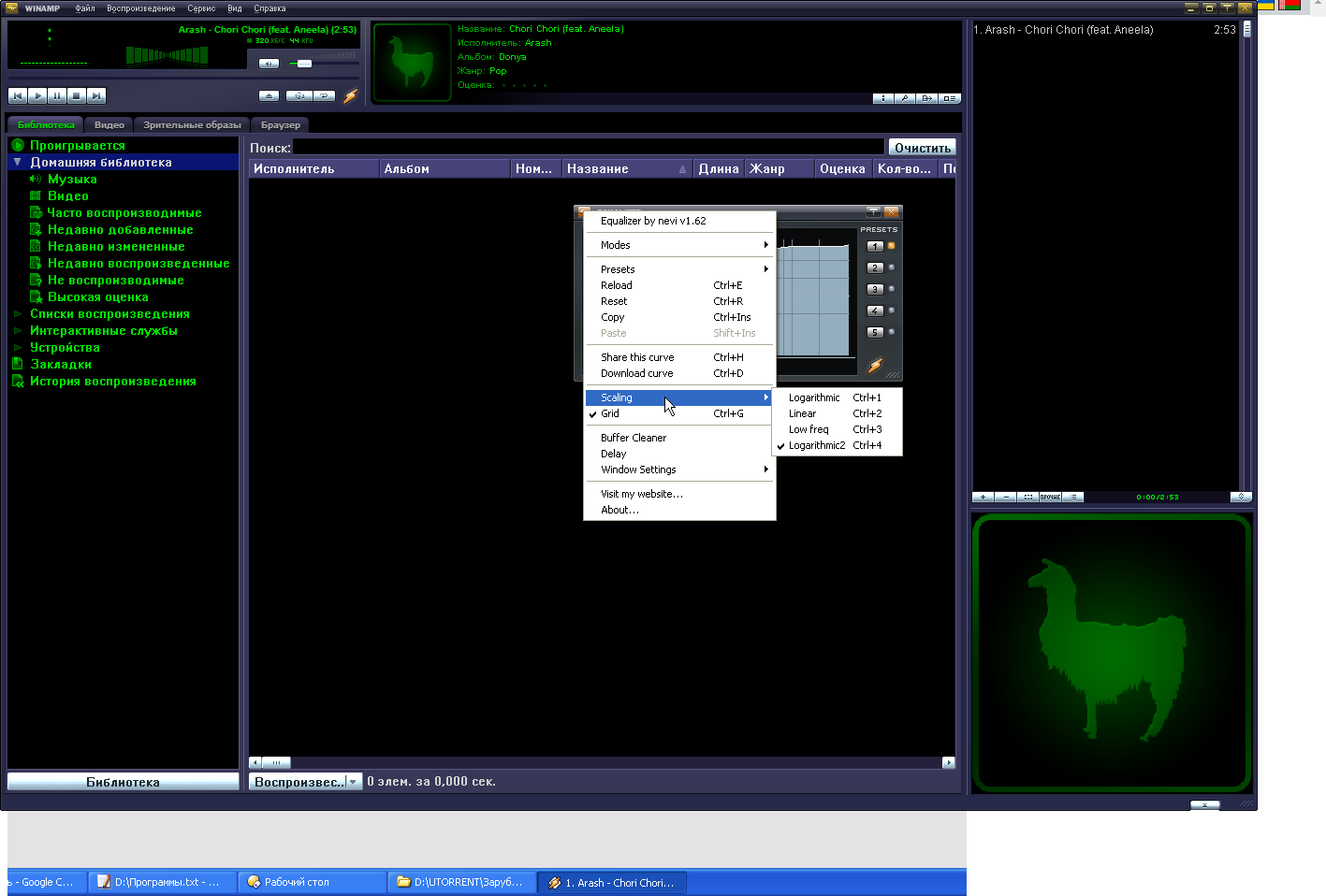


Having a database of songs at your disposal, you can freely sort them, aggregate them into specific collections and display them in specific views. It supports full Unicode filenames and Unicode metadata for media files. At installation, Winamp scans the user's system for media files to add to the Media Library database. Winamp's Media Library is a powerful tool that allows you to conveniently handle your multimedia collections. 5.1 Surround sound is supported where formats and decoders allow. For MPEG Video, AVI, and other unsupported video types, Winamp uses Microsoft's DirectShow API for playback, allowing playback of most of the video formats supported by Windows Media Player. Winamp supports playback of Windows Media Video and Nullsoft Streaming Video. The standard version limits maximum burn speed and datarate ("Pro" version removes these limitations). CD support includes playing and importing music from audio CDs, optionally with CD-Text, and burning music to CDs. It supports gapless playback for MP3 and AAC and ReplayGain for volume leveling across tracks. Winamp was one of the first widely used music players on Windows to support playback of Ogg Vorbis by default. Winamp supports music playback using MP3, MIDI, MOD, MPEG-1 audio layers 1 and 2, AAC, M4A, FLAC, WAV, and WMA. This acquisition allowed the Winamp SA to access a much larger audience and offer users a new experience. On January 17, 2014, Radionomy, one of the largest platforms for producers and broadcasters and the world's largest digital media advertising network, announced that it had acquired the rights to the Winamp player and the Shoutcast internet radio platform. In June 1999, Winamp was sold to AOL, which continued to develop the program until December 2013. Unfortunately, the original Nullsoft development team no longer exists. After court disputes and the conclusion of an out-of-court agreement, Nullsoft stopped using it and implemented an ISO decoder from the Fraunhofer Society (Fraunhofer Gesellschaft), the creators of the MP3 format. In later versions, it was replaced by Nitrane, a licensed decoder created by Nullsoft or PlayMedia (there were ongoing court disputes as to the owner of the rights to the product). Originally, MP3 playback was based on the AMP decoding engine developed by Tomislav Uzelac (PlayMedia Systems, Inc.). MusicBrainz also used MusicIP's Open Fingerprint Architecture for fingerprinting and the AmpliFIND (formerly MusicDNS) service for identifying audio files since 2006, but is phasing out AmpliFIND in favour of the open source AcoustID, after AmpliFIND was acquired by Gracenote in 2011.Winamp is a media player originally developed by Justin Frankel and Dmitry Boldyrev by their company Nullsoft. In wikipedia ( ): "MusicBrainz, a free and open content project for a music database that uses AcoustID's free database of audio fingerprints, which aims to map its fingerprints to the MusicBrainz database. You're right that Gracenote bought AcousticID? Do not be confusing the fact of owning the Gracenote MusicID ( )?

It gives the ability to visually compare musicĪcoustID fingerprints have their duration recorded, making it easy to discard certain incorrect links between recordings and acoustIDs. It is actively developed, along with supporting software. This was created by Lukáš Lalinský, and made public around January 2011. AcoustID is Musicbrainz’ third and latest up-and-coming audio fingerprinting system.


 0 kommentar(er)
0 kommentar(er)
